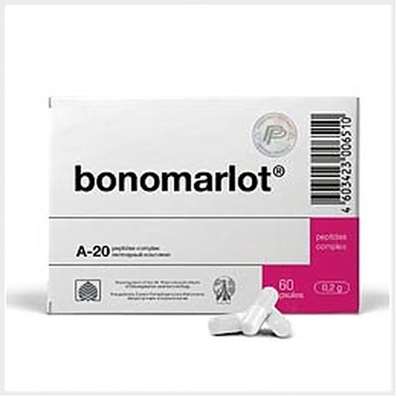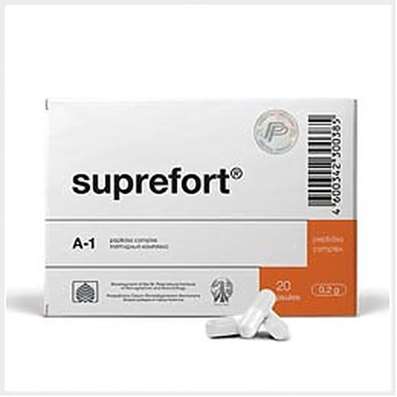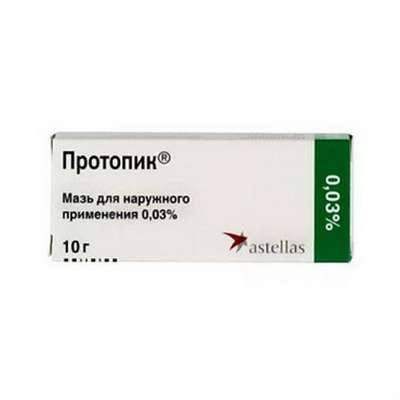Instruction for use: Imigran
I want this, give me price
Dosage form: Nasal spray; Coated tablets
Active substance: Sumatriptan*
ATX
N02CC01 sumatriptan
Pharmacological group:
Serotonergic agents
The nosological classification (ICD-10)
G43 Migraine: The pain of migraine; Migraine; hemiplegic migraine; Migraine headache; A migraine attack; Continuous headache; hemicranias
G43.0 Migraine without aura [simple migraine]: Migraine without aura
G43.1 Migraine with aura [classic migraine]: Basilar migraine; Migraine with aura
Composition and release form
Tablets, coated with a coating.
Sumatriptan (as sumatriptan succinate) 50 or 100 mg
Auxiliary substances: lactose monohydrate; Lactose anhydrous; MCC; Sodium croscarmellose; Magnesium stearate; Tablet shell: for dosage of 50 mg - Opadry pink YS-1-1441-G; Methylhydroxypropyl cellulose; Titanium dioxide; Triacetin; Iron oxide red; For dosage of 100 mg - Opadry white OY-S-7393; Titanium dioxide; Methylhydroxypropylcellulose
In blistere 2 pcs .; In the box 1 blister.
Spray for nasal administration 1 dose
Sumatriptan 10 or 20 mg
Auxiliary substances: potassium phosphate monosubstituted; Sodium phosphate, disubstituted anhydrous; Sulfuric acid; Sodium hydroxide; purified water
In single-use vials, with a dispensing device; In the box 1 or 2 bottles.
Description of dosage form
Tablets of 50 mg: pink oval biconvex tablets with an engraved inscription "IMIGRAN" on one side and "50" on the other (or even on one side and with an engraving "50" on the other). Tablet sizes: 12 × 6.5 mm. On the fracture, two layers are visible: the inner layer (the core of the tablet) is white or almost white; The outer layer (the tablet shell) is pink.
Tablets of 100 mg: white or almost white oval biconvex tablets with an engraved inscription "GLAHO" on one side and "IMIGRAN" on the other (or even on one side and with an engraving "100" on the other). Tablet sizes: 12 × 6.5 mm. On the break the tablets are white or almost white in color.
Spray nasal: clear liquid from light yellow to dark yellow color.
Characteristic
Selective 5-HT1 receptor agonist (5-HT1D).
Pharmachologic effect
Mode of action - antimigraine.
Interacts with 5-HT1 receptors (does not affect 5-HT2-5-HT7 receptor subtypes), mainly in the blood vessels of the brain (their stimulation leads to vasoconstriction).
Pharmacodynamics
In animals sumatriptan selectively narrows the vessels in the system of carotid arteries, but does not change the cerebral blood flow. It is believed that the expansion of these vessels and / or edema of their walls is the main mechanism of migraine in man. In addition, it has been experimentally established that sumatriptan inhibits the activity of the trigeminal nerve. Both of these effects can underlie the anti-migraine effect of sumatriptan.
Pharmacokinetics
Sumatriptan is rapidly absorbed after ingestion and after intranasal administration. When ingested, 70% of Cmax in plasma is reached after 45 minutes, when taken at a dose of 100 mg Cmax in plasma is an average of 54 ng / ml. After intranasal administration of Cmax in plasma is achieved after 1-1.5 hours and is 12.9 ng / ml.
The average absolute bioavailability when ingesting is 14% due to presystemic metabolism and incomplete absorption. Due to presystemic metabolism, the mean absolute bioavailability for intranasal use is 15.8% of that for n-to-c administration. In patients with impaired liver function, an increase in sumatriptan in the plasma should be expected as a result of a decrease in presystem clearance.
The degree of binding to plasma proteins is small (14-21%), the total volume of distribution on average is 170 liters, T1 / 2 is approximately 2 hours. The total plasma Cl is on average 1160 ml / min, renal Cl is 260 ml / min, extrarenal Clearance is about 80% of the total ground clearance.
In adolescents (12-17 years of age), the average plasma Cmax is 13.9 ng / ml, and the mean T1 / 2 is about 2 hours. In adolescents with overweight, there is an increase in clearance and volume of drug distribution, They exhibit a higher exposure of sumatriptan.
The main mechanism for removing sumatriptan is oxidative metabolism, which is carried out under the action of the MAO type A enzyme. The main metabolite, indoleacetic analogue of sumatriptan, is excreted mainly in the urine, where it is in the form of free acid and a glucuronide conjugate. This metabolite has no activity against 5-HT1 or 5-HT2 receptors. Minor metabolites are not identified. Migraine attacks do not seem to have a significant effect on the pharmacokinetics of sumatriptan taken orally or intranasally.
Clinical Pharmacology
The clinical effect is observed 30 minutes after oral administration of the drug at a dose of 100 mg and 15 minutes after intranasal administration.
Indications of preparation Imigran
Curbing migraine attacks (with or without aura).
Contraindications
Hypersensitivity; Hemiplegic, basilar and ophthalmoplegic forms of migraine; Myocardial infarction (including in the anamnesis); IHD or suspicion of its presence; Angina of Prinzmetal; Peripheral vascular disease; Transient impairment of cerebral circulation (including in the anamnesis); Stroke (including in the anamnesis); Uncontrolled arterial hypertension; Severe impairment of liver and / or kidney function; Simultaneous reception of Imigran with ergotamine or its derivatives (including metisergid), as well as simultaneous administration of MAO inhibitors and a period of up to 2 weeks after their withdrawal.
Precautions: epilepsy (including any conditions with a decrease in the threshold of convulsive readiness), arterial hypertension (controlled), pregnancy, lactation, age under 18 years (safety and efficacy not established), age over 65 years.
Application in pregnancy and breastfeeding
Pregnant women Imigran can be prescribed only if the intended benefit to the mother exceeds the potential risk to the fetus. Avoid breastfeeding for 24 hours after applying sumatriptan.
Side effects
Common symptoms: pain, tingling, fever, feeling of pressure or heaviness (these symptoms are usually transient, but can be intense and occur anywhere in the body, including the chest and throat), hot flashes, dizziness, a feeling of weakness and / or fatigue, Drowsiness (usually mild or moderate and transient).
From the cardiovascular system: arterial hypotension, bradycardia, tachycardia (including ventricular), palpitation, temporary increase in blood pressure (observed soon after taking sumatriptan); There are rare reports of heart rhythm disturbances (up to the time of fibrillation), transient changes in the ECG of the ischemic type, myocardial infarction, coronary artery spasm; Sometimes Raynaud's syndrome develops.
From the gastrointestinal tract: in some patients nausea and vomiting were noted (there was no association of these side effects with sumatriptan); A slight increase in the activity of hepatic enzymes, dysphagia, a feeling of discomfort in the abdomen; Rarely is ischemic colitis.
From the side of the central nervous system and the organ of vision: there are some rare reports of convulsive attacks after taking sumatriptan. In a number of cases, they were observed in patients with a history of seizures or in conditions predisposing to the occurrence of seizures; In a part of patients predisposing factors were not revealed. Sometimes after taking Imigran, there was diplopia, flickering in the eyes, nystagmus, scotoma, reduced visual acuity. Very rarely developed a partial transient loss of vision. However, it should be borne in mind that visual impairment can be associated with the very seizure of a migraine.
Reactions of hypersensitivity: skin manifestations (rash, hives, itching, erythema); In rare cases - anaphylaxis.
Local symptoms (with spray application): slight transient irritation or burning sensation in the nasal cavity or pharynx, nosebleeds.
Interaction
No interaction of sumatriptan with propranolol, flunarisin, pisotifen and ethyl alcohol was noted. With simultaneous administration with ergotamine, a prolonged vasospasm was noted (sumatriptan can be prescribed no earlier than 24 hours after taking medications containing ergotamine, and preparations containing ergotamine can be prescribed no earlier than 6 hours after taking sumatriptan). Perhaps the interaction between sumatriptan and MAO inhibitors is contraindicated in their simultaneous application.
There are separate reports on the development of weakness, hyperreflexia and impaired coordination in patients after simultaneous administration of sumatriptan and drugs from the group of selective serotonin reuptake inhibitors (SSRIs). In the case of simultaneous administration of sumatriptan and SSRIs, the patient's condition should be carefully monitored.
Dosing and Administration
Inside, intranasal. Imigran is recommended to be used as soon as possible after the onset of a migraine attack, but it is equally effective when used at any stage of an attack.
Inside (the tablet is swallowed whole, washed down with water), adults: the recommended dose is 1 tablet of 50 mg (some patients may need a higher dose of 100 mg).
Intranasal, adults (18 years and older) - 20 mg (1 dose) Immigraine in the form of a spray in one half of the nose. It should be remembered that the absorption of sumatriptan and migraine attacks in strength and clinical manifestations may differ not only in different patients, but also in the same patient, so a dose of 10 mg may be effective.
If migraine symptoms do not disappear and do not decrease after taking the first dose of Imigran (regardless of the method of administration), the second dose should not be taken to stop the same attack. However, Imigran can be used to stop subsequent migraine attacks. If the patient feels better after the first dose and then the symptoms resume, a second dose can be taken within the next 24 hours. The maximum dose of Imigran should not exceed 300 mg for any 24-hour period (ingestion) or two doses of Imigran for 20 Mg (with intranasal application).
Overdose
Receiving Imigran inside at a dose of more than 400 mg, or a single SC injection at a dose of 16 mg, or the administration of Imigran once in a dose of 40 g intranasally did not cause any side effects other than those listed above.
Treatment: monitoring of patients for at least 10 hours, if necessary - standard maintenance therapy. There is no data on the effect of hemodialysis or peritoneal dialysis on the concentration of sumatriptan in plasma.
Precautionary measures
Immigrants cannot be used for preventive purposes. The drug should be prescribed only if the diagnosis is not in doubt. As with the use of other antimigraine drugs, when prescribing Imigran in patients with a previously unidentified migraine or in patients with atypical migraine, other potentially serious neurologic conditions should be excluded. It should be borne in mind that in patients with migraine, the risk of developing certain cerebrovascular disorders (for example, stroke or transient cerebral blood flow disorder) is increased.
Sumatriptan should not be prescribed to patients with suspected heart disease without a prior examination to exclude cardiovascular disease. Such patients include women in the postmenopausal period, men over the age of 40 and patients with risk factors for the development of IHD. Although the examination does not always allow the identification of heart disease in some patients, in very rare cases they develop side effects from the cardiovascular system. After taking sumatriptan, transient intense pain and constriction in the chest, which can spread to the neck, may occur. If there is reason to believe that these symptoms are a manifestation of CHD, it is necessary to conduct an appropriate diagnostic examination.
Patients with controlled hypertension sumatriptan should be administered with caution. In some cases, a transient increase in blood pressure and peripheral vascular resistance was observed.
In the case of simultaneous prescription with drugs from the SSRI group, the patient's condition should be carefully monitored.
Caution should be applied to sumatriptan in patients with such diseases, which can significantly alter the absorption, metabolism or excretion of this drug (eg, impaired renal or hepatic function). Care must be taken in patients with a history of epilepsy or structural damage to the brain, which reduces the threshold of convulsive readiness.
In patients with hypersensitivity to sulfonamides, the administration of sumatriptan can cause allergic reactions, which range from skin manifestations to anaphylaxis. Data on cross-sensitivity are limited, but caution should be exercised when assigning sumatriptan to such patients.
Clinical experience of Imigran in elderly patients (over 65 years) is limited. There are no significant differences in the pharmacokinetics of sumatriptan in elderly people and in young patients, but it is not recommended to administer Imigran to patients over 65 years of age before receiving additional data from clinical studies.
In patients with migraine, there may be drowsiness associated with both the disease itself and with the use of Imigran, so they should be especially careful when driving and working with moving mechanisms.
Do not exceed the recommended dose of Imigran.
Manufacturer
Glaxo Operations United Kingdom Ltd, United Kingdom (tablets).
GlaxoSmithKline SpA, Italy (nasal spray).
Storage conditions of the drug Imigran
At temperatures below 30 ° C.
Keep out of the reach of children.
Shelf life of the drug Imigran
Coated tablets 50 mg - 4 years.
Coated tablets 100 mg - 4 years.
Spray nasal 10 mg / dose - 3 years.
Spray nasal 20 mg / dose - 3 years.
Do not use after the expiry date printed on the package.

 Cart
Cart





